|
|
|
|
[Index]
[Back] |
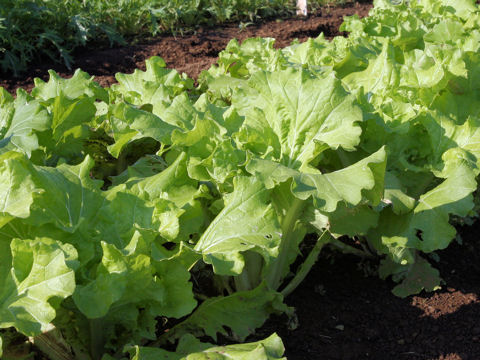 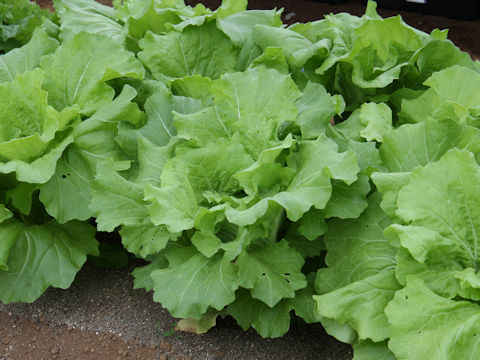 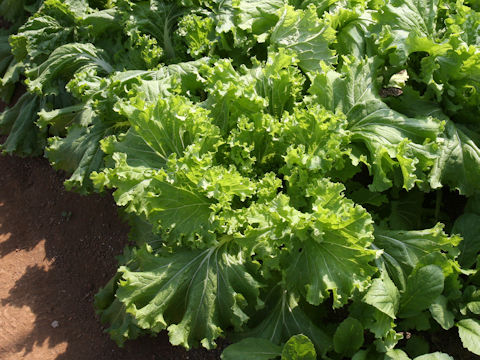 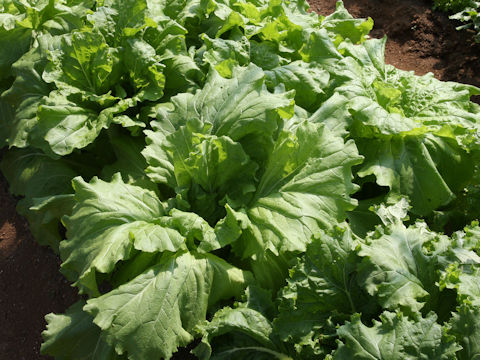 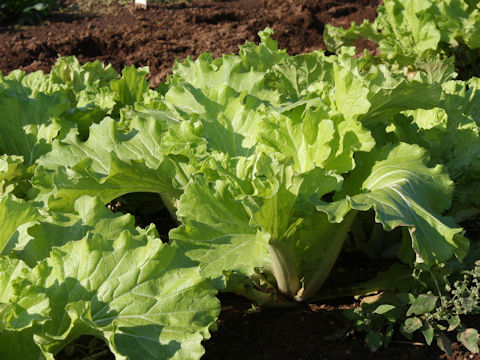 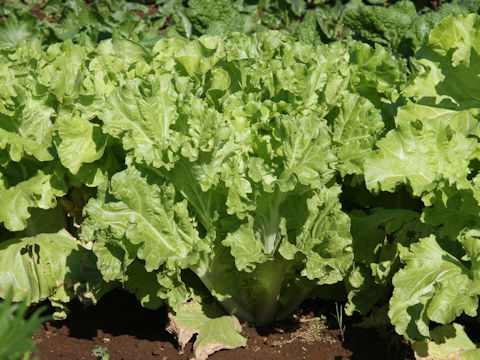 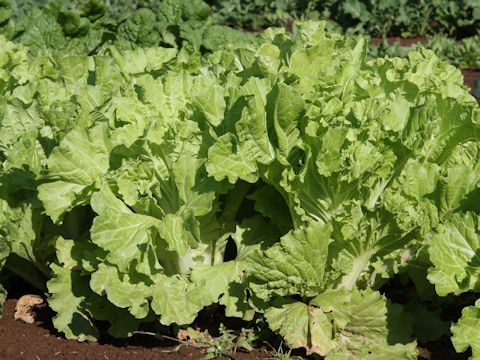 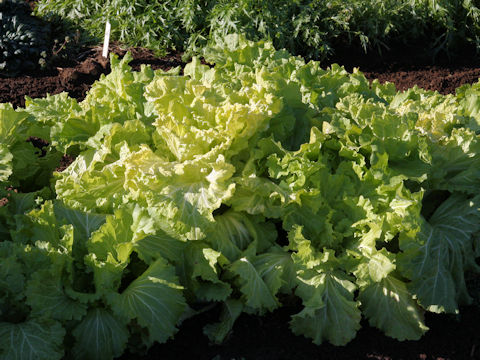 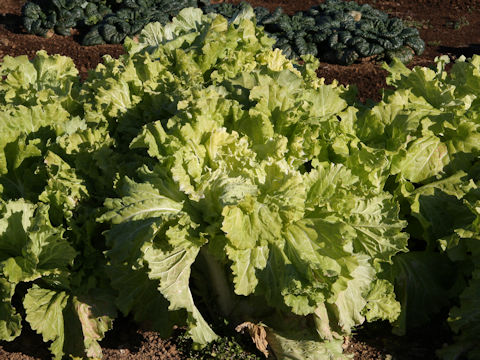 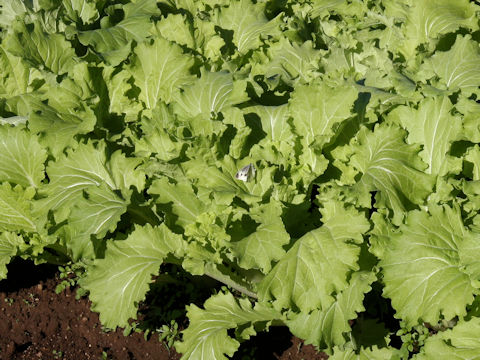 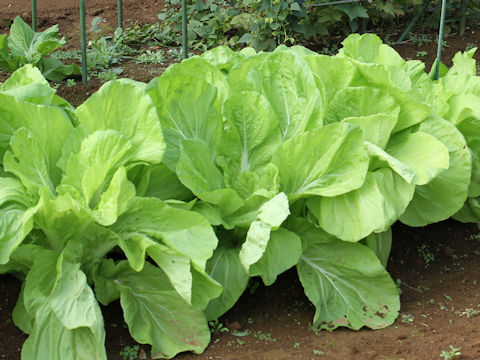 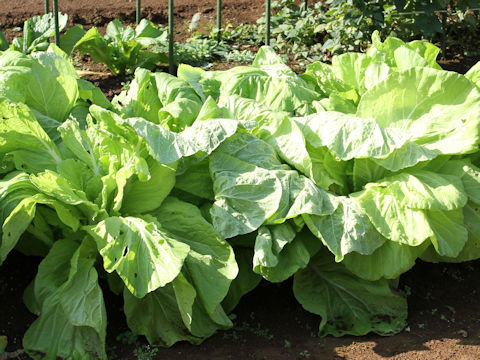 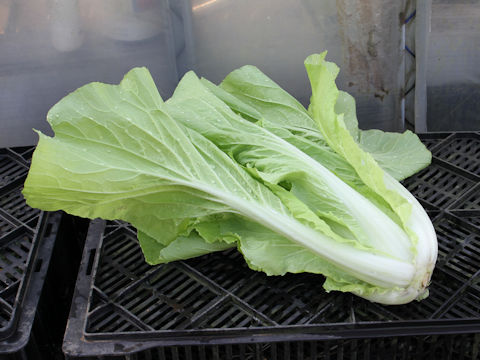 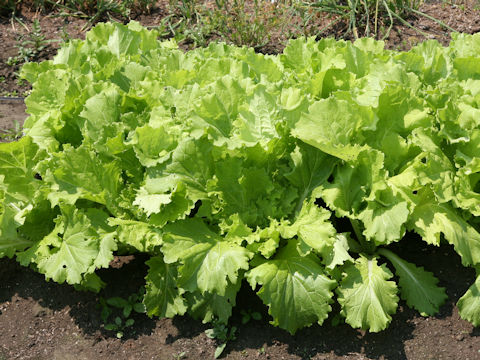 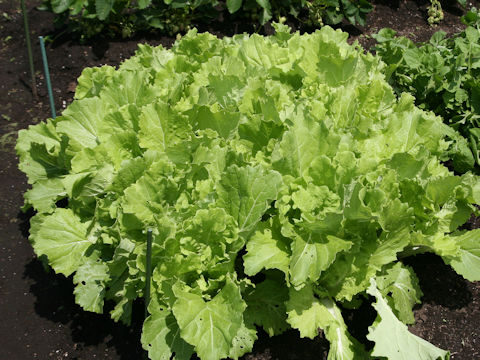 |
|
|
|
中国の山東省が原産です。わが国へは明治時代の初期に渡来しました。「はくさい」の仲間で、中肋が白く、波打ちした黄緑色の葉が特徴です。丸葉系と切葉系に分けられます。丸葉系は、葉が丸く不結球で、別名で「べかな(べか菜)」とも呼ばれます。切葉系は、葉に切れ込みがあり、根元が結球状になります。お浸しや味噌汁の実、漬け物、煮物などに利用されます。なお「べかな」の名前は、かつて東京の江戸川で、べか舟という和船で運搬されていたことに由来します。 ・写真上、中2の品種は、「春蒔き新山東菜」(中裂)、 ・中1、中3、中5は、「みなとべかな」(波状、サカタのタネ)、 ・中4、中6〜中8は、「丸葉山東菜」(全縁)、 ・中9〜中12は、「おたふく山東菜」(波状、中原採種)、 ・中13、下は、「半結球山東菜」(波状)。 |
|
|
アブラナ科アブラナ属の越年草で、学名は Brassica rapa var. pekinensis (syn. Brassica campsetris var. dentata)。英名はありません。 |
|
|
The "Saitou-sai" (Brassica rapa var. pekinensis) belongs to Brassicaceae (the Mustard family). It is a winter annual herb that is native to Shandong, located on the eastern coast of China. It was introduced into Japan the early Meiji Era (1868-1912). This herb is closely related to Chinese cabbage. It is defined that its leaves are yellowish-green and undulate with white rachis. "Santou-sai" is classified into two strains; the round-leaved strain and the notched-leaved strain. The leaves are used for boiled green, miso soup, pickle, and steamed food. The round-leaved strain is also known as "Beka-na" and is derived from the fact that it was once transported by a Japanese boat called "Beka-bune" in the Edo River in Tokyo. |
|
|
[上・中1] 千葉県香取市大角にて、2010年05月12日撮影。 [中2・中3] 同上にて、2010年05月18日撮影。 [中4] 同上にて、2015年11月06日撮影。 [中5・中6] 同上にて、2010年11月24日撮影。 [中7・中8] 同上にて、2010年12月29日撮影。 [中9] 同上にて、2012年11月16日撮影。 [中10] 同上にて、2015年11月12日撮影。 [中11・中12] 同上にて、2015年11月17日撮影。 [中13] 宮城県川崎町支倉にて、2022年05月19日撮影。 [下] 同上にて、2023年05月16日撮影。 |
|
|
|
Shu Suehiro |